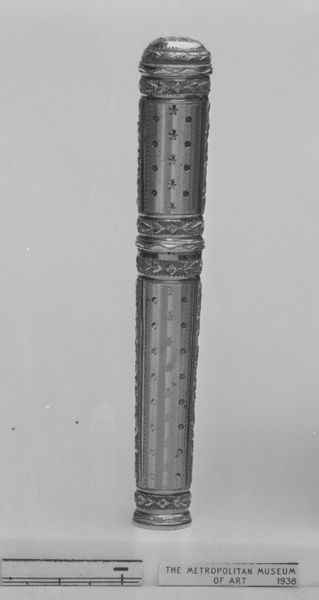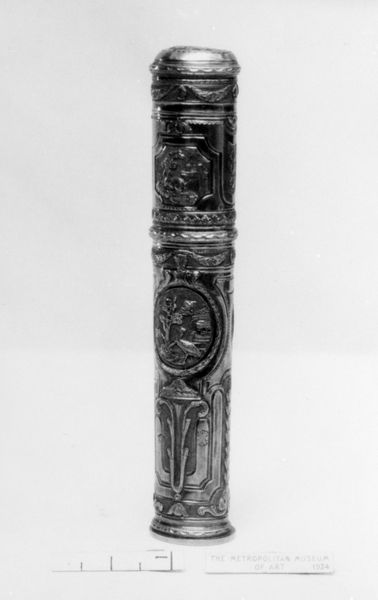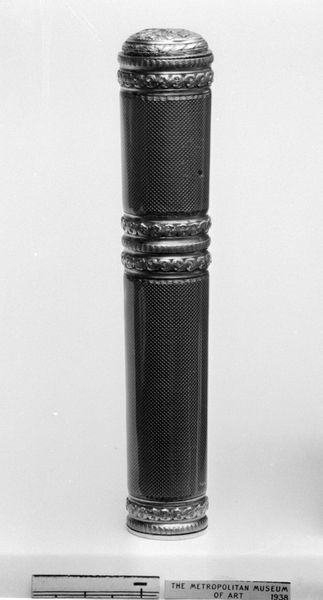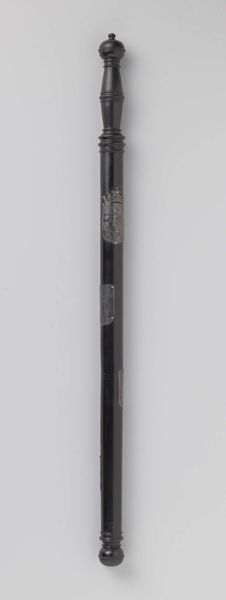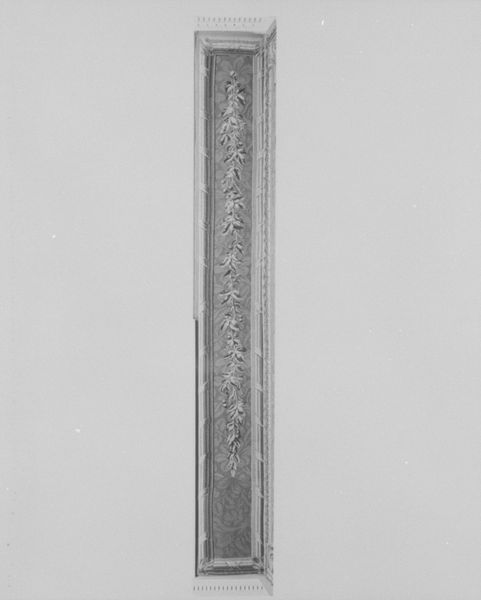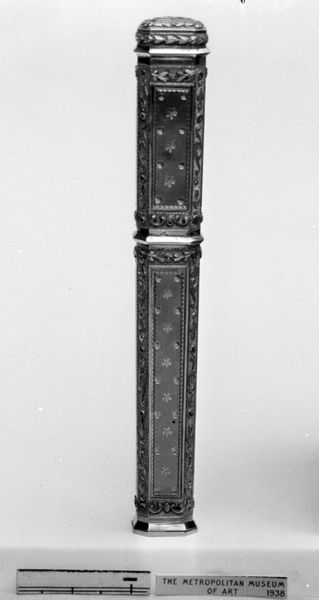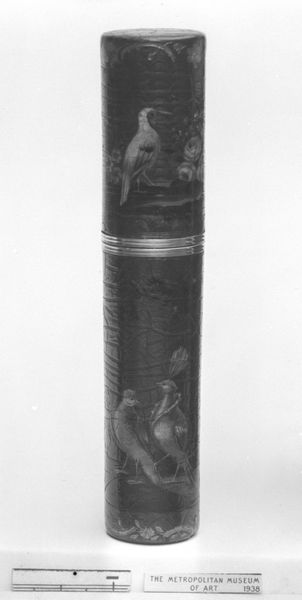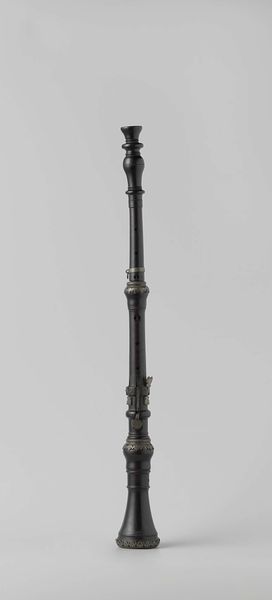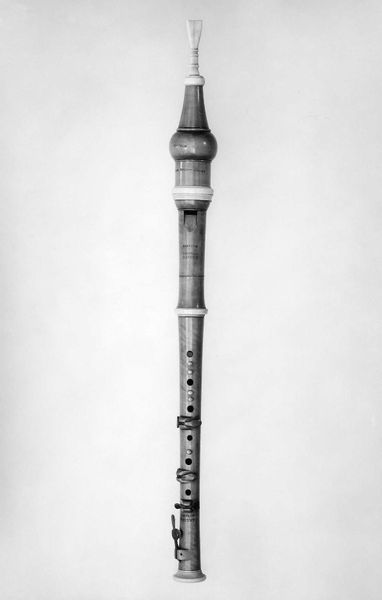
Dimensions: 4 3/8 in. (11.1 cm)
Copyright: Public Domain
Editor: Here we have Joseph Etienne Blerzy’s "Sealing Wax Case" from 1783-1784, crafted in silver. It is currently housed at the Metropolitan Museum of Art. I am fascinated by the miniaturization and intricate detailing, the stars meticulously placed. How do you interpret this piece from a formalist perspective? Curator: The key, I think, lies in analyzing the interplay between its materials and form. Notice the strict verticality broken only by horizontal bands of ornamentation. What does that rhythm suggest to you? Editor: A structured elegance, perhaps? A deliberate visual harmony, yet the stars disrupt that strict symmetry… Curator: Precisely. Observe also how the artist juxtaposes the smooth, dark surfaces with the textured, light-reflecting silver filigree. This contrasting articulation generates a visually engaging tension, while the repetition and spacing introduce another dimension to that interplay of darkness and light. Editor: I see what you mean. It is not merely decorative, it’s a sophisticated manipulation of space and texture. Would you then disregard its historical function as a container for sealing wax? Curator: While the object’s historical context is undeniably relevant, within the formalist lens, our focus remains fixed upon the aesthetic relationships. The case transforms into an exercise in balance and visual contrast, the external world made manifest in a harmonious whole. Editor: I’m beginning to appreciate the depth one can achieve by focusing solely on these inherent formal qualities. It shifts the emphasis from what it *is* to *how* it presents itself visually. Curator: Precisely. It is about perceiving structure beneath appearance, revealing form as the generator of the artistic work.
Comments
No comments
Be the first to comment and join the conversation on the ultimate creative platform.
